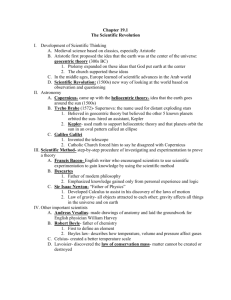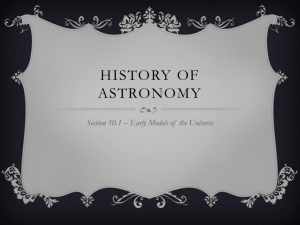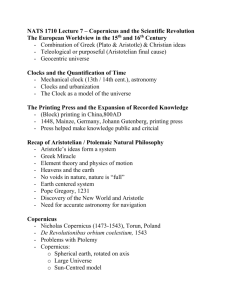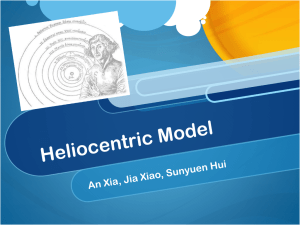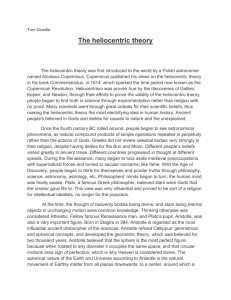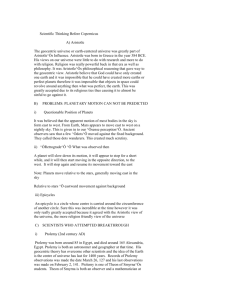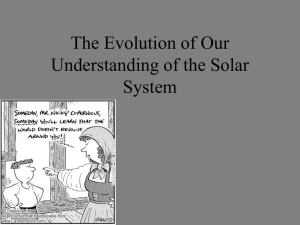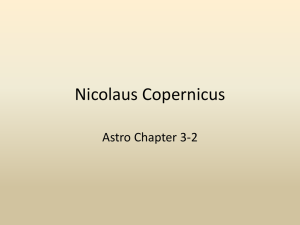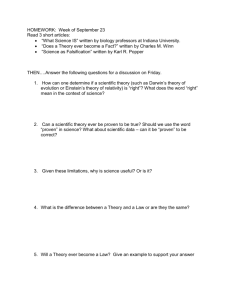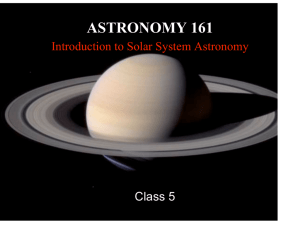Astronomy Quiz: Seasons, Models, and Planets
advertisement
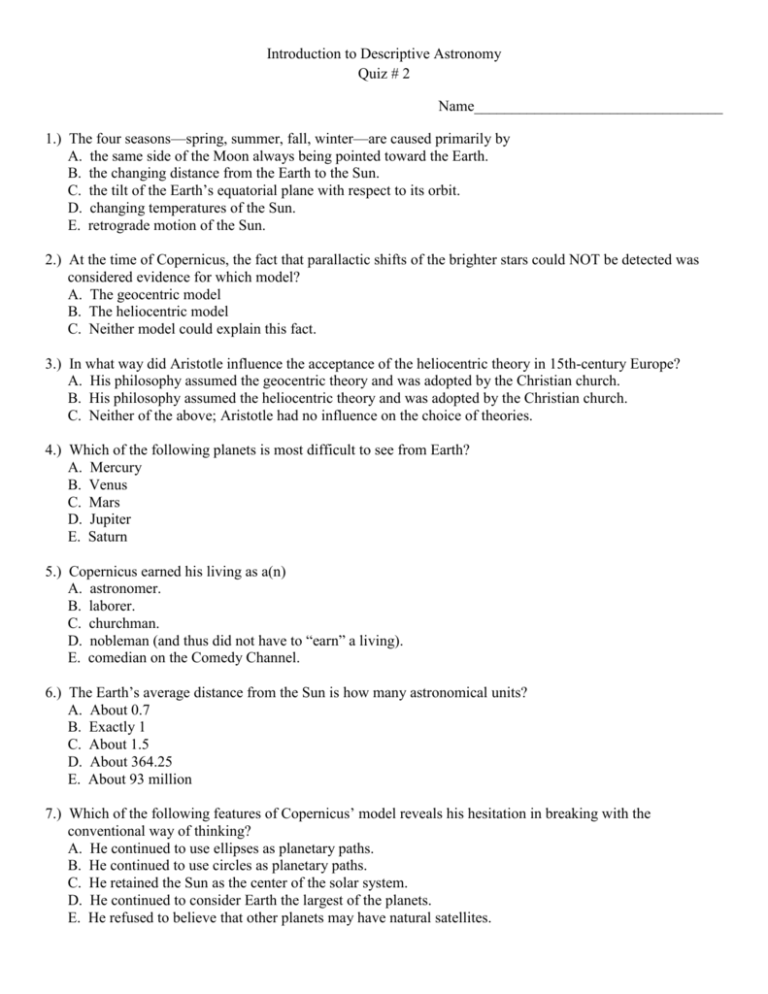
Introduction to Descriptive Astronomy Quiz # 2 Name_________________________________ 1.) The four seasons—spring, summer, fall, winter—are caused primarily by A. the same side of the Moon always being pointed toward the Earth. B. the changing distance from the Earth to the Sun. C. the tilt of the Earth’s equatorial plane with respect to its orbit. D. changing temperatures of the Sun. E. retrograde motion of the Sun. 2.) At the time of Copernicus, the fact that parallactic shifts of the brighter stars could NOT be detected was considered evidence for which model? A. The geocentric model B. The heliocentric model C. Neither model could explain this fact. 3.) In what way did Aristotle influence the acceptance of the heliocentric theory in 15th-century Europe? A. His philosophy assumed the geocentric theory and was adopted by the Christian church. B. His philosophy assumed the heliocentric theory and was adopted by the Christian church. C. Neither of the above; Aristotle had no influence on the choice of theories. 4.) Which of the following planets is most difficult to see from Earth? A. Mercury B. Venus C. Mars D. Jupiter E. Saturn 5.) Copernicus earned his living as a(n) A. astronomer. B. laborer. C. churchman. D. nobleman (and thus did not have to “earn” a living). E. comedian on the Comedy Channel. 6.) The Earth’s average distance from the Sun is how many astronomical units? A. About 0.7 B. Exactly 1 C. About 1.5 D. About 364.25 E. About 93 million 7.) Which of the following features of Copernicus’ model reveals his hesitation in breaking with the conventional way of thinking? A. He continued to use ellipses as planetary paths. B. He continued to use circles as planetary paths. C. He retained the Sun as the center of the solar system. D. He continued to consider Earth the largest of the planets. E. He refused to believe that other planets may have natural satellites. 8.) Who, in the 13th century, incorporated the works of Aristotle and Ptolemy into Christian thinking? A. Copernicus B. Dante C. Aquinas D. Kepler E. Pope Paul XII 9.) A scientific theory A. could conceivably be proven False, but could never be proven true. B. could conceivably be proven true, but could never be proven False. C. could neither be proven true nor False. D. could conceivably be proven true, but also could conceivably be proven False. 10.) Parallax is defined as A. the periodic apparent reversal of the direction of planets’ motion on the celestial sphere. B. the result obtained by dividing the distance between the foci by the longest distance across an ellipse. C. the motion of a star as it revolves around a companion star. D. the apparent shifting of nearby objects with respect to distant ones as the position of the observer changes. E. the result of a planet’s change of speed as predicted by Kepler’s law of equal areas. 11.) Aristotle and Ptolemy held that the center of the universe is A. Earth. B. the Milky Way. C. Venus. D. the Sun. E. [None of the above.] 12.) Which of the following is NOT a criterion for a good scientific theory? A. A theory should be aesthetically pleasing. B. A theory should be agreed upon by all knowledgeable scientists. C. It should be possible to prove the theory wrong. D. A theory should fit present data. E. [None of the above is correct. All are criteria for a good theory.] 1.) C 2.) A 3.) A 4.) A 5.) C 6.) B 7.) B 8.) B or C 9.) A 10.) D 11.) A 12.) B
